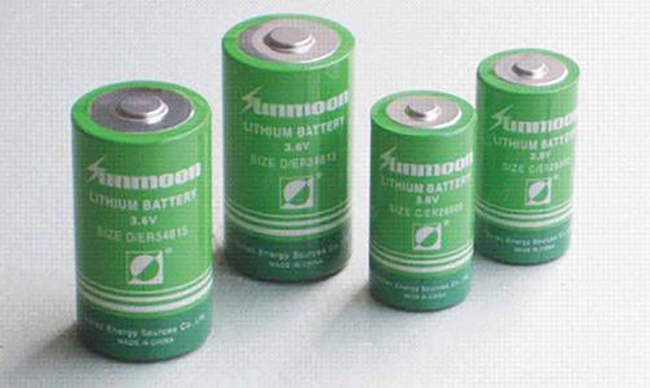- Home
- Products
- Elementary
- Boride Powder
- 3D Printing Powder
- Sulfide Powder
- Oxide Powder
- Carbide powder
- Nitride Powder
- Silicide Powder
- Hydride Powder
- Telluride Powder
- Selenide Powder
- Stearic Acid Series
- Phosphide Powder
- Nanoparticles
- Metal Alloy
- MAX Phase
- Lithium Battery Anode
- Surfactant
- Molecular sieves
- Concrete Admixtures
- News
- Answers
- Contact
- About
News
- 0
- 0
Lithium batteries like to use graphite anode materials
If you are looking for high-quality products, please feel free to contact us and send an inquiry, email: brad@ihpa.net
According to statistics from China Chemical and Physical Power Supply Industry Association, China's export volume and export value of lithium-ion batteries have continued to increase. In 2021, China's exports of lithium-ion batteries were 3.428 billion, with a year-on-year growth of 54.34%. The export of lithium-ion batteries was 28.428 billion DOLLARS, up 78.34% year on year.
From the battery export destination, so far. China's lithium-ion batteries are mainly exported to the Asia Pacific and the United States and other places. In terms of price, the price of graphite, led by lithium-ion batteries, is expected to expand globally.
Lithium-ion battery refers to a secondary battery system in which two different lithium intercalation compounds that can reversibly intercalate and deintercalation lithium ions are used as the battery's positive electrode and negative electrode, respectively. During charging, lithium ions are deintercalated from the positive electrode through the electrolyte and separator and embedded in the negative electrode; on the contrary, lithium ions are deintercalated from the negative electrode through discharge of the electrolyte the separator and embedded in the positive electrode. The negative electrode of the lithium-ion battery is made of harmful electrode active material, binder, and additives mixed to make a paste glue, which is evenly spread on both sides of the copper foil, dried, and rolled.
Advantages of graphite as anode material
Graphite is an allotrope of carbon, and the two are closely related. Graphite is the most stable form of carbon. (Diamond is a metastable allotrope of carbon. Although its hardness is much higher than graphite, it is the hardest substance in nature, but its stability is lower than that of graphite.)
The word "graphite" comes from the Greek word "graphein," which is resistant to high temperature and corrosion, has good electrical conductivity, thermal conductivity, and stable chemical properties, and is lighter than aluminum. In addition to being used as anode material for lithium-ion batteries, high-quality graphite can also be used in different fields such as fuel cells, solar cells, semiconductors, light-emitting diodes, and nuclear reactors.
In general, graphite has the advantages of high electronic conductivity, the small volume change of layered structure before and after lithium intercalation, high lithium intercalation capacity, and low lithium intercalation potential, and has become the mainstream commercial lithium-ion battery negative electrode material.

How to get graphite?
There are two ways to obtain graphite: one is natural ore, and the other is the synthesis of coal tar. The graphite materials used in lithium-ion batteries are generally prepared by blending 55% synthetic graphite and 45% low-purity natural graphite.
Manufacturers once favored synthetic graphite because the uniformity and purity of synthetic graphite were better than natural graphite. Now it is not the same. The application of modern chemical purification methods makes it possible to obtain 99.9% pure natural graphite after heat treatment. In contrast, synthetic graphite is 99% pure, making the former more popular.
Compared with synthetic graphite, purified natural flake graphite has higher crystallinity and exhibits better electrical and thermal conductivity. In addition, natural graphite is expected to reduce the production cost of lithium-ion batteries while achieving equal or better battery performance.
High-quality graphite supplier
Luoyang Moon & Star New Energy Technology Co., LTD, founded on October 17, 2008, is a high-tech enterprise committed to developing, producing, processing, selling, and technical services of lithium-ion battery anode materials. After more than 10 years of development, the company has gradually developed into a diversified product structure with natural graphite, artificial graphite, composite graphite, intermediate phase, and other negative materials (silicon-carbon materials, etc.). The products are widely used in high-end lithium-ion digital power and energy storage batteries. If you are looking for Lithium battery anode material, click on the needed products and send us an inquiry:sales@graphite-corp.com
Inflationary pressures on Canadians continue to rise. The consumer-price index rose 6.7% in March from a year earlier, the biggest increase since January 1991, according to the latest figures from Statistics Canada.
On a month-on-month basis, Canada's CPI rose 1.4 percent in March, also accelerating from February's 1.0 percent rise.
Prices in the eight major sectors covered by the statistics continued to rise. The uptrend comes against the backdrop of continued price pressures in the Canadian housing market, widespread supply chain constraints, and geopolitical conflicts, according to CBC. A variety of factors have affected energy, commodity, and agricultural markets. Meanwhile, Canada's employment picture continued to improve in March, with the unemployment rate falling to a record low and the average hourly earnings of employees rising.
Excluding gasoline, Canada's CPI rose 5.5 percent year on year in March. It is also the highest since comparable data began in 1999.
The widespread supply chain constraints and geopolitical conflicts are expected to continue to affect the prices of the graphite.
Inquiry us
PREVIOUS NEWS
TROX-300 Series Molecular Sieve
NEXT NEWS